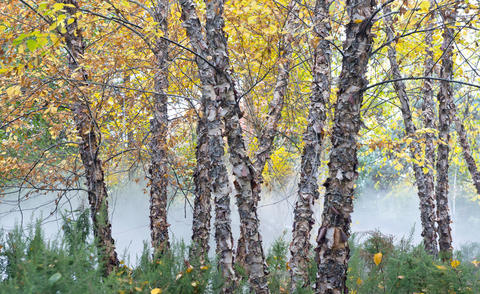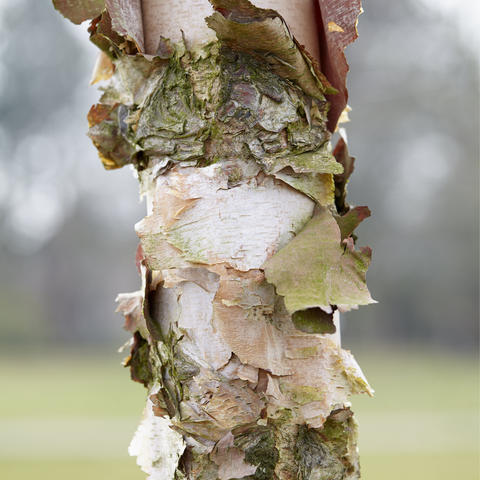Black birch
The black birch is a real eye-catcher in the garden with its decorative bark and multi-stemmed growth. Here are our tips for planting and care.
Factsheet
- Growth type
-
- Tree
- Growth height (from)
- from 1000 cm to 1500 cm
- Growth characteristics
-
- upright
- multi-trunked
- Flower color
-
- green
- yellow
- Flowering time (month)
-
- March to April
- Flower shape
-
- Kittens
- Leaf color
-
- green
- page format
-
- ovate
- sawn
- diamond-shaped
- Sheet properties
-
- Autumn coloring
- Fruit color
-
- brown
- yellow
- Fruit shape
-
- nut fruit
- Fruit characteristics
-
- Self-seeding
- Light
-
- sunny
- Soil type
-
- gravelly to loamy
- Soil Moisture
-
- moderately dry to humid
- ph value
-
- neutral to weakly acidic
- Lime compatibility
-
- sensitive to lime
- Decorative or utility value
-
- Bark decoration
- picturesque growth
- Winter Hardness
-
- hardy
- Climate zones according to USDA
-
- 5
- Use
-
- Floor mounting
- Embankments
- Single position
- house tree
- Landscape woody plants
- Pioneer tree
- Garden style
-
- natural garden
- Park area
- Cemetery
The black birch is native to eastern North America, between New Hampshire to Minnesota and from Florida to Texas. Above all, you can see them in floodplains, river banks or other humid areas, which is why it’s American name is "River Birch". The indigenous people used the tree primarily to obtain the sweet sap, which is similar to maple syrup. Betula nigra is a member of the genus, which includes around 60 species.
The deciduous black birch remains relatively low for a birch, it does not go above 32.8 to 49.2 feet here, but in its native region it can reach 82.02 feet. It typically develops a round, half-open crown that becomes a little thinner with age. Betula nigra tends to form multiple trunks, which gives it a picturesque appearance. Young shoots have a warm red-brown color, on which dark lenticels can be seen. The bark is distinctive, peeling off in several "layers", but sticking to the trunk and curling up decoratively. The parts below that come to the fore are reddish brown in color. With age, a black bark develops at the base. The root system is rather flat and has many fine roots.
The diamond- to egg-shaped leaves of the black birch shine in an intense green, they are between 1.18 and 3.93 inches long and the edges are conspicuously double-cut. It turns yellow in fall.

Green and yellow catkins are typical of the Black Birch: The female flowers are only 0.59 inches long, while the male flowers reach almost 3.14 inches. Both appear in full spring.
The yellow-brown fruits that ripen in June are around 0.98 inches long.
Like all birches, the black birch is predestined to colonize in pioneer locations. Associated with this is a preference for sunny locations. Betula nigra is considered to be one of the most heat-tolerant birches. It is also resistant and robust to frost, wind and cold.
The Black Birch prefers soil that is well supplied with water, but also tolerates occasional drought and flooding. The pH should not go too far into the alkaline range, slightly acidic soil is much preferred. The proportion of clay should also be kept within limits, as this can easily lead to compaction and waterlogging.
Planting is similar to that of other birches: Trees with bare roots are best planted in early spring shortly before budding. So that the fine roots do not tear off when the wind moves, it is best to fix the trunk in place with a stake in the first few years.
The Black Birch, like the entire Betula genus, does not like to be transplanted.
The Black Birch looks most beautiful when it can develop its habitus freely. If the saw needs to be used, this should be done in late summer - the tree will bleed too much beforehand.

The Black Birch is gaining more and more friends because of its dainty, relatively moderate growth. It can even be cultivated in a container. Like many other Birch trees, its white bark does not make it stand out; its the distinctive "bark rolls", even without leaves, is what makes it look extraordinary. Alleys, parks, cemeteries, large gardens: The Black Birch is welcome wherever there is enough space. It can only be a nuisance for allergy sufferers. In their homeland, Betula nigra is often planted on river banks as protection against erosion.
‘Heritage’ is a USA cultivar, which quickly grows into a medium-sized tree with slightly downward-pointing branches. The crown is more pyramid-like in shape. The white-silvery bark color is retained even in older specimens. This variety blooms early, the almost 3.14 inch long catkins immediately attracting our attention in spring. It is also sold under the name “Cully”.
“Dura Heat” is distinguished from the species by its higher drought and heat tolerance. This variety is also very popular because of its harmonious crown shape. The leaves, which turn buttery yellow in autumn, remain on the tree for a relatively long time. The bark is tinted relatively conspicuously in pink to orange-brown. Both varieties are characterized by a significantly lighter bark color than the species.
The species itself is easily reproduced by sowing the varieties by splice grafting on seedlings and Birchs (Betula pendula).
The Black Birch is a magnet for all types of insects that use it as an early source of food. Damage from aphids, for example, can only occur if the tree is already weakened.

